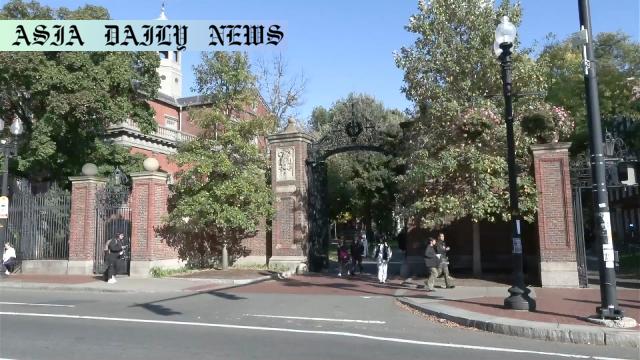Harvard University rejects Trump’s demands, leading to federal funding delays for reforms on inclusion and campus discipline policies.

Introduction
Harvard University is under intense scrutiny following its refusal to comply with demands issued by President Donald Trump’s administration. The U.S. government has partially frozen federal grants and contracts towards Harvard, sparking deliberations over the ethical and practical implications of such measures. At the heart of this standoff lies key issues such as campus discipline policies, diversity and inclusion programs, and allegations of anti-Semitism.
The Origins of The Conflict
The dispute began last year during campus protests against Israel’s military operations, during which several incidents of harassment towards Jewish students were reported. The Trump administration subsequently demanded that Harvard immediately reform and enforce student discipline policies, dismantle diversity and inclusion programs, and pledge stronger safeguards against acts of anti-Semitism on campus. Harvard leadership publicly rejected these conditions on Monday, citing their commitment to academic freedom and student expression, while also emphasizing their efforts to ensure safe environments for all.
Trump’s Course of Action
In response, the Trump administration executed a partial freeze on federal funding to the university, a move that has raised eyebrows across political and academic circles. Announcing the freeze, the administration further suggested a reevaluation of Harvard’s tax-exempt status, citing concerns over the university’s alignment with political ideologies. President Trump, addressing the issue on social media, accused the institution of fostering political bias, hinting at potential consequences for integrating perceived “terrorist-inspired” beliefs into academic settings.
The Implications on Campus Policies
One of the administration’s primary demands was a revamp of campus discipline policies to address incidents of harassment and hate speech. Harvard maintains that its existing frameworks sufficiently address these concerns, but critics argue that more stringent measures are necessary. The fallout from student protests last year continues to serve as a flashpoint in broader national debates about free expression, hate speech, and the balancing act between inclusivity and discipline on university campuses.
Debates Over Diversity and Inclusion
Many of the administration’s demands focus on dismantling diversity, equity, and inclusion (DEI) initiatives, which they accuse of fostering ideological biases. DEI programs have been central to Harvard’s effort to promote equity and representation among its diverse student body. Critics argue that these initiatives reflect progressive partisan ideologies, while proponents emphasize their role in breaking systemic barriers and advancing social justice goals. The funding freeze consequently reignites contentious conversations around the role and scope of DEI programs in higher education.
Potential Long-Term Consequences
The threat of potentially revoking Harvard’s tax-exempt status carries significant implications not only for Harvard but also for all academic institutions across the U.S. This unprecedented move could establish a precedent extending governmental oversight over educational institutions based on perceived political or ideological leanings. It also raises essential questions about academic independence, free expression, and the role of federal funding in shaping university policies.
Conclusion
As this controversial showdown unfolds, it underscores profound disputes over how institutions navigate identity, discipline, and federal oversight within a polarized nation. Harvard’s resistance against the Trump administration’s demands serves as a powerful statement on preserving institutional autonomy, but also ignites broader debates about balancing free expression against hate speech and fostering inclusivity amidst political dissent. The decision on these matters will undoubtedly influence the trajectory of higher education policy and governance in the years to come.
Commentary
A Clash Between Power and Academic Autonomy
The ongoing conflict between Harvard University and the Trump administration brings to light tensions at the intersection of government policy and institutional independence. Federal funding remains a double-edged sword for universities—a necessary resource that often comes with political or ideological strings attached. The boldness of the Trump administration’s actions raises questions about how far government entities should go in influencing campus policies and culture under the guise of moral standards or national interest.
Academic Freedom in the Modern Landscape
Harvard’s refusal to adhere to the administration’s demands is an emblematic defense of academic freedom. Universities have historically acted as bastions of thought diversity and progressive change, creating a space for debate rather than conformity. Yet, the delicate equilibrium between protecting free expression and ensuring respectful discourse for all parties remains an unresolved challenge—not just for Harvard, but many institutions worldwide. Allegations of anti-Semitism bring forward pressing responsibilities for universities to ensure no student feels unwelcome or unsafe due to their identity.
The Future of Inclusion Policies
One pivotal issue here is the critique of Diversity, Equity, and Inclusion (DEI) programs. While these initiatives are designed to bridge systemic inequities, they’re often mired in controversy due to perceived political inclinations. By demanding their elimination, the Trump administration echoes a broader resistance against progressive frameworks, raising crucial questions about whether DEI programs aid or impede higher education’s quest for neutrality. Academic institutions must strike a balance—acknowledging systemic inequities while embracing inclusivity without swaying excessively toward any single ideology.
Power Beyond Campus Boundaries
The issue’s larger implications touch upon power dynamics between government entities and private or semi-private institutions. Educational autonomy has been a cornerstone principle in many democracies. Yet, the tool of financial leverage—in this case, federal funding—remains a potent force that governments can wield to shape policy. The conversation must continue, involving policymakers, academic leaders, and society at large, to ensure actions taken do not undermine foundational democratic tenets while addressing the need for accountability, inclusivity, and justice.


